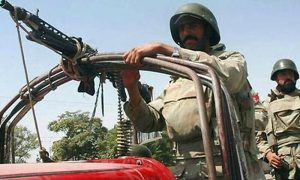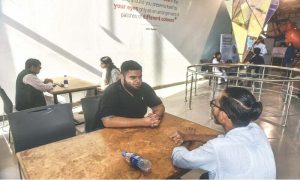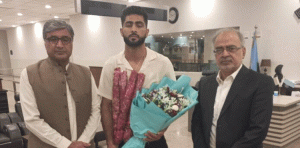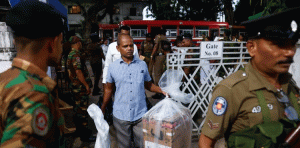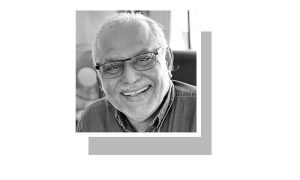
More than two million people will fill the streets of Manhattan on Sunday for the New York City Pride March. But in small towns across the New York region in recent weeks, the march’s buoyant spirit has already gotten a head start.
In the bucolic villages of the Hudson Valley and the conservative towns of Long Island, Pride events have drawn a wide range of people: gay and transgender adults who make their lives outside the urban centers that have been the community’s traditional haven, young people who recently came out of the closet, and straight parents who want to demonstrate inclusivity to their children — no matter their sexual orientation or gender identity.
Jamie Creamer, 38, who lives in Patchogue, on the South Shore of Long Island, attended a Pride event there with her wife and their two young children, “to start setting an example,” she said.
“This is our community. This is our town,” she said. “My son plays sports in this town, and I’m a coach in this town. If we want to make a difference, we’ve got to start with ourselves.”
The New York City Pride March began as a commemoration of the 1969 Stonewall riots, widely viewed as the start of the modern L.G.B.T.Q. rights movement. Since then, Americans’ support for L.G.B.T.Q. people has soared to somewhere between 60 and 70 percent in recent polls. For many people, that has turned Pride from the radical celebration of a riot against the police into a sort of secular holiday, with rainbows adorning everything from subway ads and police cars to limited-edition merchandise rolled out each June at big-box stores.
But despite those gains, a backlash has grown since same-sex marriage became legal nationwide in 2015. In recent years, states across the country have passed laws banning drag performances and transgender health care. Protests and attacks have targeted L.G.B.T.Q. events and their supporters.
For L.G.B.T.Q. people in smaller towns, day-to-day life is often lived with a nagging anxiety “in the back of our minds,” said James Diele-Stein, 43, who co-founded Patchogue Pride in Suffolk County. Like other small-town Pride events, it is both a celebration of the local community and a political statement to the world at large that gay and transgender people exist, despite sometimes hostile circumstances.
“I think the more and more we have these celebrations, the more and more it becomes a little bit of the norm,” he said. “It lets people feel a little more comfortable, especially out in public.”
On the other side of Long Island, Nick Rowley, 22, attended a festival in Huntington, his hometown on the North Shore.
Celebrating close to home was a big relief, he said. Getting into New York City can be a hassle, especially when two million other spectators are headed there too. And then there is the expense: Round-trip train fare is over $25, and gay bars in the city often charge a cover of $40 or more just to walk in the door.
But more than anything else, he said, small town Pride makes an important statement, both for L.G.B.T.Q. people in the area and for straight people who may not realize their co-workers and neighbors are gay or transgender.
“It shows that queer people exist,” Mr. Rowley said. “You can hate us. You can like us. But we’re here.”
The Long Island Pride festival in Huntington has been held for decades. But many events across the region began in just the last few years, produced by residents who wanted to build a sense of community for L.G.B.T.Q. people, and their friends, who live outside major urban areas.
Long Island has become a culture war battleground in recent months.
In February, Bruce Blakeman, the county executive of the region’s most populous county, Nassau on Long Island, issued an order that barred transgender women from playing on women’s sports teams at county-owned sports facilities.
A court struck down that order last month, saying Mr. Blakeman had overstepped his authority, but last week the County Legislature voted in favor of the ban, enshrining it into law.
Those tensions weighed on some who attended Pride events on Long Island in June.
Anne Kayser, 69, arrived at the pride festival in Northport, in neighboring Suffolk County, with her wife, Ronnie Rubin, 75. This was only the second year Northport held a Pride event, and Ms. Kayser said she was thrilled by the increased visibility in a town that can sometimes feel hostile.
In a parking lot next to the event, Ms. Rubin said, she heard a man say, “What’s wrong with American flags? Why aren’t there American flags?”
“And I said, stupidly, maybe, ‘What’s wrong with gay flags?’” she added. “And he turned to me and he said, ‘You.’”
Nearby, Elliot Baravarian, 15, stood in a Girl Scouts vest passing out brochures about how to support L.G.B.T.Q. young people. It was part of his project for a Gold Award, the highest award achievable in the Girl Scouts. His mother, Jeannie Baravarian, 51, looked on proudly.
“You need to help people feel more included and seen,” Ms. Baravarian said. “Especially in smaller communities.”
Elliot said he felt lucky because “there are a lot of people who aren’t girls in Girl Scouts” and many do not feel that they can be open about their identities.
While he is “very open about being trans,” he said, being a queer young person in the suburbs can feel lonely. Pride events like Northport’s help.
“It almost takes a weight off your shoulders,” said Elliot. “Like I’m not alone.”
One of the smallest communities in the region to have its own Pride festivities was Dobbs Ferry, a commuter village hugging the Hudson River with a population of roughly 11,000.
Lynn Goodman, who leads the Human Rights Advisory Committee for the town of Greenburgh, of which Dobbs Ferry is a part, said she was inspired to start the event in 2021 after a transgender friend of her daughter’s was verbally harassed in another town.
The first festival happened in nearby Tarrytown; it moved to Dobbs Ferry the next year.
“It’s a labor of love,” Ms. Goodman said.
In Lewisboro, a town of 12,000 deep in the woods on the other side of Westchester County, Pride this year was held in a leafy park, in a wooden pavilion adorned with a Lions Club emblem. The celebration began four years ago, when drag queen story hours were drawing protests in some New York towns.
An ice cream vendor gave out free scoops of Ben & Jerry’s. A local real estate agent and representatives from an animal shelter set up tables to advertise their services.
Michelle Klein was there with two of her three children, one of whom, Alex, is nonbinary, and her boyfriend, Dave McQuillan. He wore a rainbow cowboy hat, with dozens of Crayola-colored rhinestones glued to his bald head.
Mr. McQuillan’s two dogs were there too, decked out in rainbow-themed doggy couture for the “Pet Pride Parade.” The children had dressed the dogs, Shea and Roscoe, for the parade, which doubled as a contest of canine charisma. Roscoe wore a shirt that said: “This dog loves Pride.” Shea’s shirt declared him to be a regular “A-Paw-Lo.”
Alex, who starts eighth grade in the fall, said they chose the shirt because Apollo is “the bisexual god of Greek mythology.”
The pet parade was a family-friendly touch that Ms. Klein and her children appreciated, even though neither dog won top honors. (They were bested by a white poodle whose pompadour was dyed rainbow colors, and a pet chicken named Cody who charmed the judges.)
In Patchogue, Jeffrey Miller, 39, and Andrea Miller, 37, brought their three children, ages 4, 3 and 9 months, to the Pride festival. They are regulars at local drag story hours and other Pride events, Ms. Miller said.
If their children grow up to be gay or transgender, “they’re going to know mom and dad are cool with it,” she said.
“We don’t know who our children will be or who they’ll love when they’re older,” she added. “So we’ve always just wanted them to grow up in an environment where it’s like, ‘Hey, this is just people and we’re just having fun.’”

